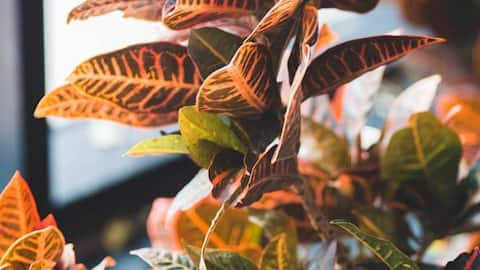Green thumb guide: Caring for croton plants
Croton, a tropical plant, is characterized by its thick, leathery leaves that come in a stunning variety of colors, shapes, and sizes. Given its sensitivity, crotons are susceptible to darkening foliage, even turning almost black when exposed to cool drafts, low humidity, or poor soil nutrition. As a result, nurturing crotons can pose challenges for both novice and seasoned gardeners.
Regular maintenance
Croton plants thrive when planted in containers indoors, but they require ample sunlight to maintain their vibrant colors; otherwise, their hues may fade over time. To counteract the effects of a dry indoor climate, especially during winter months, using a humidifier can provide beneficial moisture for the plant's health. Regular maintenance is crucial as indoor crotons are prone to accumulating dust and pest residue.
Warm conditions
Croton plants, originating from tropical climates, thrive in warm conditions. To maintain their health, ensure temperatures stay above 55℉ as colder temperatures can cause leaf browning. Ideal temperatures range around 80℉ or below, as extreme heat can be detrimental to the plant's well-being. Additionally, it's crucial to monitor watering frequency, and follow the rule "more water less often".
Prevent over-watering
Indoors, if using saucers, dispose of excess water collected after watering to prevent overwatering. When cultivating them, it is essential to maintain a moist but not consistently wet soil environment, particularly during the active growth periods of spring and summer. Check the soil regularly by feeling its moisture level; if it feels dry to the touch, it is likely time for watering.
Optimal soil and fertilizer conditions
Crotons thrive in well-draining soil with a slightly acidic to neutral PH. A mix of peat moss, perlite, and regular potting soil provides the ideal balance of moisture retention and drainage. Avoid overwatering, as crotons are susceptible to root rot in soggy conditions. Fertilize monthly, even when using a diluted solution, to avoid soil salt buildup. Homemade fertilizers aren't enough for Croton's nitrogen needs.
Ensure there is indirect light
Croton plants thrive in full sun, though certain species can tolerate partial shade. To achieve full color, ensure the plant receives ample light. Ideally, place your croton near a window facing east or west where it can receive plenty of filtered sunlight throughout the day. Optimal lighting conditions are crucial for enhancing the croton's overall appearance and color intensity.
Dealing with leaf loss
Leaf loss in croton plants may stem from stress caused by moving between indoor and outdoor environments or nutrient imbalances. If adjusting to a new setting, allow time for acclimatization; typically, after a few weeks, growth resumes. Pruning should focus on removing unhealthy parts or maintaining the desired shape. Trim dead portions from points of origin and cut overgrown ones above a node.
Remedy for rolling leaves
Large croton leaves may roll or twist, indicating rapid growth possibly due to excessive fertilizer. To remedy this, reduce fertilizer application. Promote proper growth by increasing light exposure; if possible, move the plant to a brighter location. While bright light enhances vibrant colors, be cautious of overheating. Employ fans to cool leaves and maintain optimal plant health.
